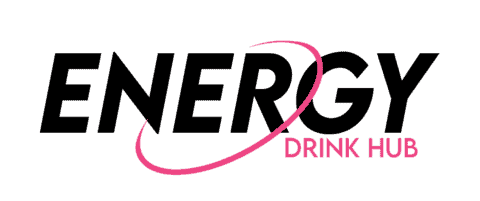If I ask you to name any energy drink that comes to your mind the instant you hear the word energy drink, what would that be? The answer for most of you would be Red Bull.
The reason behind this is its long existence.
Since 1987, to this day, 82 billion cans of Red Bull have been sold worldwide. Now that’s a lot of people with wings.
Red Bull is an energy drink brand owned by Red Bull GmbH, an Austrian corporation. It is the most popular energy drink brand in 2019, with a 38 percent market share.
Red Bull Blue Edition defines itself as a classic edition with a fruity taste of blueberry. It is sugar-free and contains 144 mg of caffeine, Taurine, protein, and essential vitamins.
In my opinion, I consider Red Bull Blue Edition to be the quintessential sugary energy drink; fantastic for a quick boost and sugar rush but not ideal for daily usage due to the sugar and high-calorie content.
I’d give it a 7 out of 10 because of the point’s contribution to the well-received taste and intense energy rush and the utilization of B-vitamins.
The taste of this drink comes through the inclusion of exotic blueberries that might be a little sour at the start yet are equally balancing and smooth in the end, with no harsh after-taste.
It works brilliantly by providing an immediate energy boost that lasts several hours, but if you have diabetes, it can cause a sugar surge and cardiac trouble. So do consume Red Bull with caution.
Keep reading to know more about this edition of the line of Red Bull, its ingredients, and how it can benefit or harm your health.
Page Contents
Ingredients in Red Bull Blue Edition
Red Bull energy drinks contain high-quality caffeine, Taurine, B vitamins, sweeteners, and alpine Water. The Blue Edition adds a lot to the game’s aspects by adding the following ingredients.
- Carbonated Water
- Citric Acid
- Sucrose
- Glucose
- Sodium Citrate
- Taurine
- Caffeine
- Niacinamide
- Calcium Pantothenate
- Pyridoxine HCL
- Vitamin B12
- Natural and Artificial Flavor
Primary Ingredients of Red Bull Blue Edition
Every other energy drink requires primary ingredients to differentiate them from others. These ingredients might also be a unique selling proposition to the energy drink’s composition. They are essentially what makes or breaks a drink.
Taurine
Taurine, an amino acid involved in various metabolic pathways in the body, has been shown to have antioxidant properties.
It’s a dietary supplement found in meat, fish, dairy products, and human milk.
While the evidence cannot be concluded well, several studies show that taurine supplements improve your athletic performance.
Taurine is usually mixed with caffeine’s function of being a stimulant which is not valid. It works as a depressant of the nervous system, which in return stimulates the brain.
It contributes to the following functions in the human body:
- Makes sure your cells are well-hydrated and electrolyte-balanced.
- Assists the general operation of your central nervous system and eyes.
- Maintains the immune system’s integrity and antioxidant function.
Vitamin B12
Vitamins are micronutrients that are required to keep the body functioning normally.
In energy drinks and other functional drinks, the B vitamins B1, B2, B3 (Niacin), B5 (Pantothenic Acid), B6, and B12 are the most commonly employed.
Vitamin B-12, present only in animal foods, aids in digestion and is also essential for forming red blood cells and DNA, making this drink nutritionally unique.
Even though the suggested daily need for adults is 2.4 micrograms, greater doses of vitamin B-12 are safe. Your body only absorbs what it requires, and any excess is expelled in urine.
Vitamin B-12 also has the following benefits:
- Aids in the production of brain cells.
- It prevents fatigue.
- Helps in protein production.
- Improves nerve cell functioning.
Sodium Citrate
Sodium citrate is citric acid’s sodium equivalent. It is used as a sour salt flavor enhancer because it preserves the disagreeable taste of citric acid.
It also acts as a pH regulator, giving a sour taste to drinks. Sodium citrate can also be used to buffer and neutralize gastric acid.
The acidity of urine is lowered when sodium citrate is converted into sodium bicarbonate, allowing more compounds that cause kidney stones to be eliminated.
Sodium citrate is responsible for preventing renal stones, enhancing the quality and stability of food by maintaining its pH levels, and adding flavor to food with a sour taste.
Some other benefits of sodium citrate are:
- Increment in exercise periods.
- Makes urine less acidic.
Secondary Ingredients of Red Bull Blue Edition
Secondary ingredients are those that can easily be spotted or be known in energy drinks. Mainly, all drinks utilize them as their constituents.
Carbonated Water
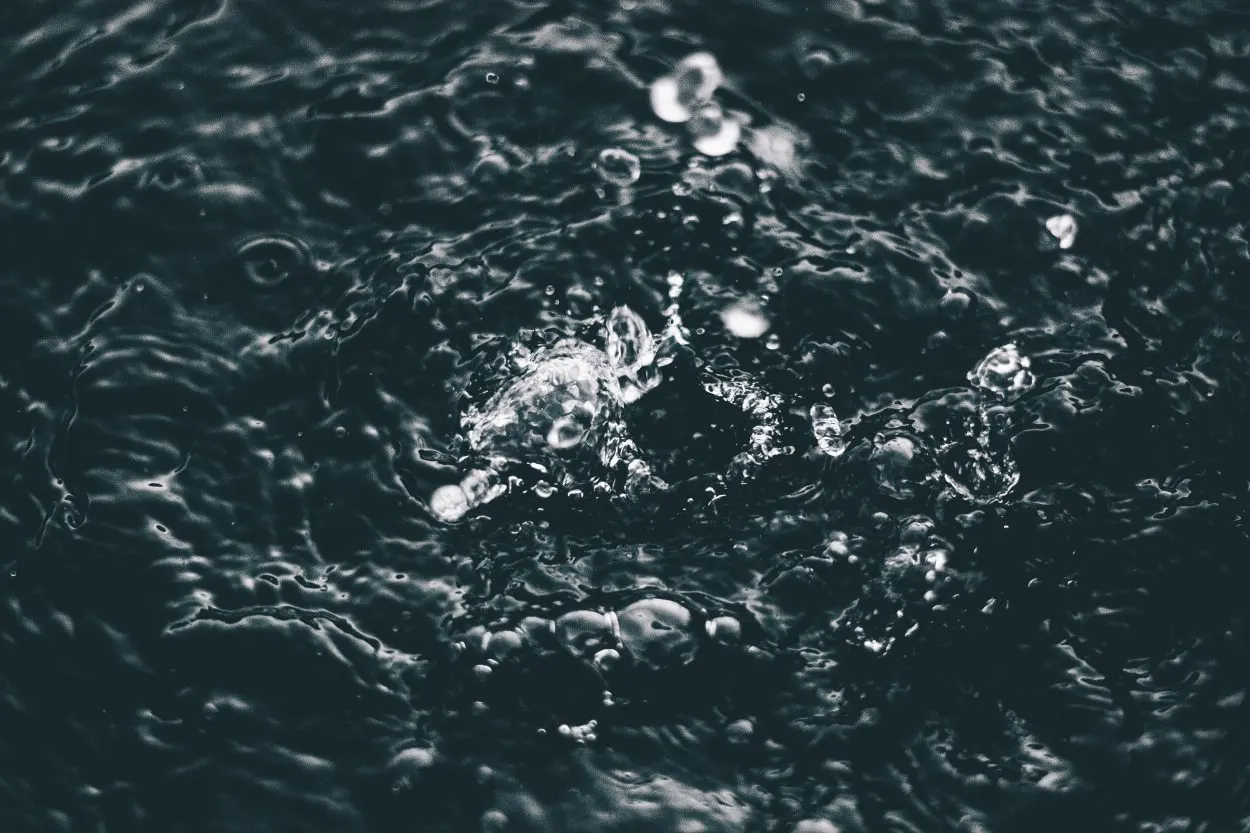
Although carbonated water is a delightful alternative to soda, is it healthier?
Water is infused with carbon dioxide gas under pressure to make it “sparkle.” Club soda, soda water, and seltzer water are all carbonated water examples.
Although carbonated water has been around for decades, it has recently become increasingly popular. According to statistics, carbonated water sales in 2016 exceeded $6 billion, a significant rise from the $2.6 billion sold in 2011.
Keep an eye out for products with additives or sweeteners. Some people may experience adverse effects such as tooth decay, flatulence, and bloating due to drinking carbonated water.
The hype you get from sparkling water is similar to that of a soda but without the calories and sugar. The majority of carbonated water makers use natural flavors.
Carbonated Water is often offered under the following brand names:
- Sparkling Water
- Fizzy Water
The benefits of carbonated water are:
- Helps stave off dehydration.
- Improves digestion.
- Weight loss
- Relives constipation
Citric Acid

Citric acid is an acidulant, preservative, emulsifier, flavoring, sequestrant, and buffering agent widely utilized in various industries, including food, beverage, pharmaceutical, nutraceutical, and cosmetic products.
Citric acid is found in citrus fruits such as lemons, oranges, and limes. You’ve tasted the citrus acid after a few bites of a lemon.
Even if there is no link between weight loss and increased energy, citric acid’s antioxidant and fat-burning properties make it beneficial.
According to the FDA, citric acid is regarded as safe as a food additive.
Citric acid is also utilized in the following applications: cooking, preservation, and cleaning agents.
Citric acid also helps in:
- Preservation of personal care products
- They are removing stains
- Metabolizes energy
- Helps in the absorption of nutrients
Caffeine Content in Red Bull Blue Edition
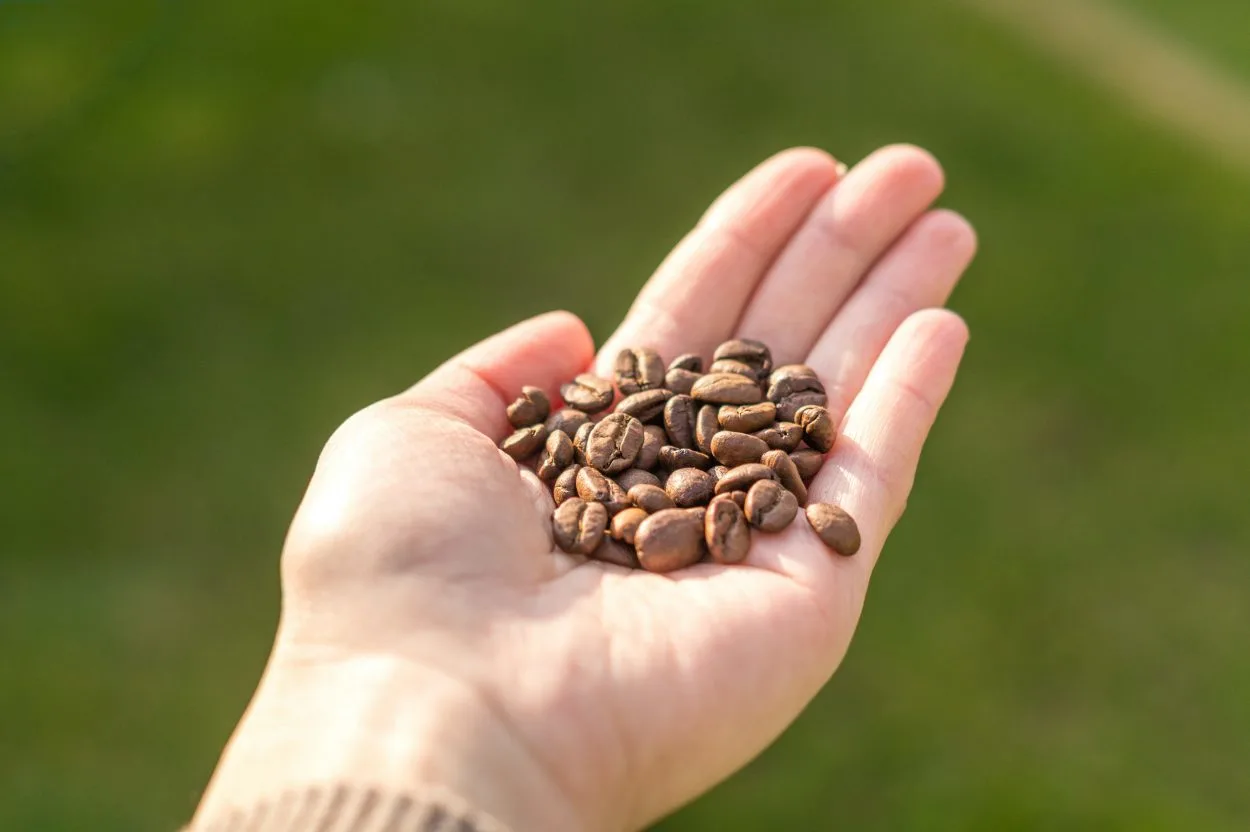
Each 8.4 fl. oz. can of Red Bull Red Edition has 114mg of caffeine.
Caffeine is a stimulant that increases alertness. It may be present in at least 63 plant species worldwide, with coffee, tea, cocoa, and guarana being the most well-known.
The daily caffeine maximum is 400mg, according to the FDA. Therefore 114mg isn’t too much. If you exceed the limit of 3-4 cups, a caffeine overdose may develop. As a result, I don’t think it’s a good idea.
According to the US Food and Drug Administration, a teaspoon of powdered caffeine equals 28 cups of coffee. It warns that pure or highly concentrated caffeine products can have serious health consequences.
Caffeine is primarily broken down in the liver. It can last anywhere from 1.5 to 9.5 hours in the blood, depending on various circumstances.
Although excessive consumption of caffeine can be harmful, causing:
- Anxiety or panic attacks
- Dehydration
- Diarrhea
- Headaches
- Jitters
- Seizures
- Irregular heartbeat
- Death
Nutrients Content in Red Bull Blue Edition
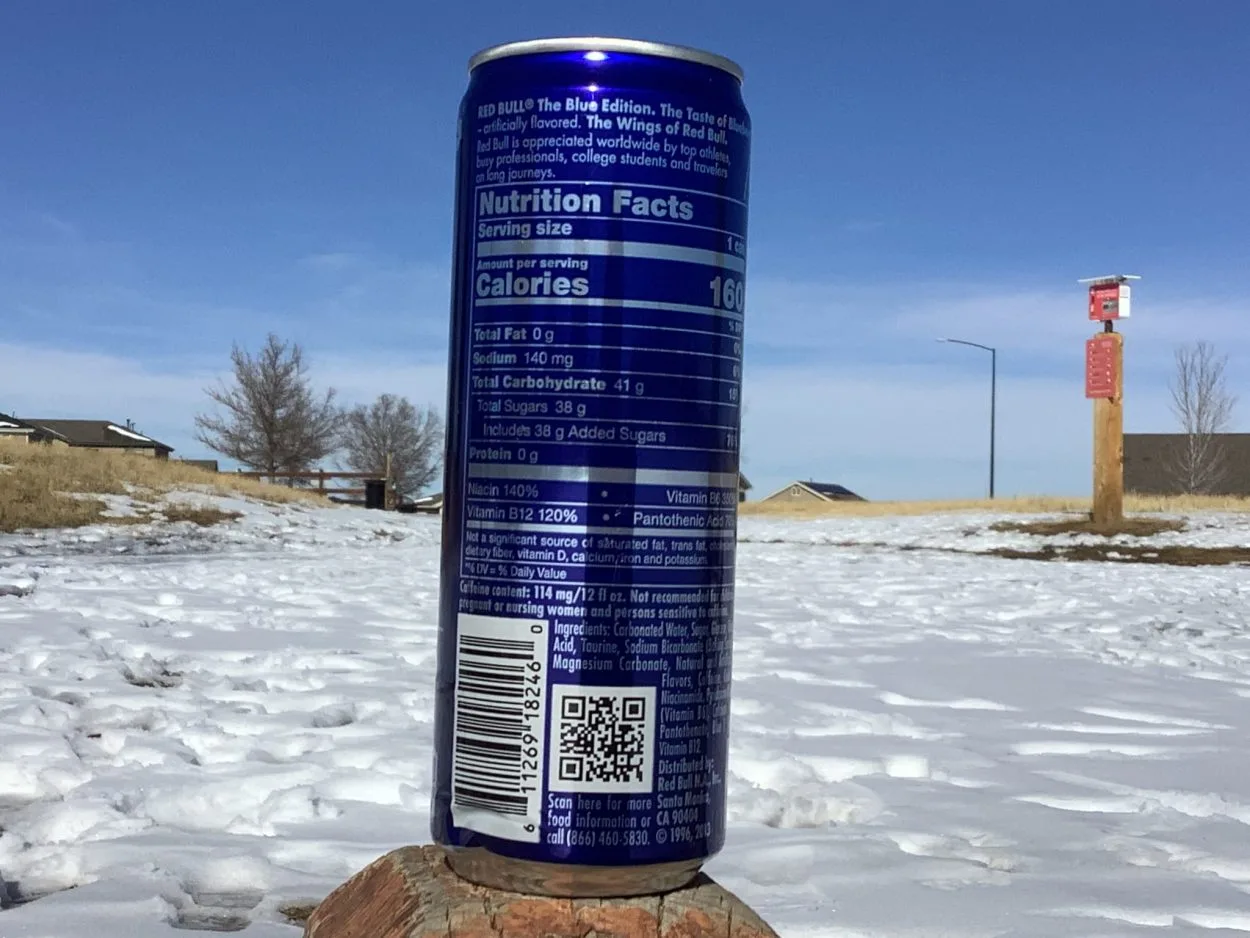
| Red Bull Blue Edition 8.4fl oz | Nutrients Value |
| Calories | 160 |
| Total Fat | 0 |
| Sodium | 140mg |
| Total Carbohydrate | 41g |
| Total Sugar | 38g |
| Added Sugar | 38g |
| Protein | 0 |
| Niacin | 140% |
| Vitamin B12 | 120% |
Calories
Red Bull Blue Edition has 160 calories, which is considered high.
Men should consume 2000 calories per day, while women should consume 2500 calories. Calories are not inherently dangerous if ingested by your body’s requirements.
Calories are a measuring unit for the quantity of energy provided by anything. Calories are required for the healthy physiological function of the human body; without them, you would perish.
It would be beneficial to burn the calories you ingest from food or other energy sources. Otherwise, they will build up in your body as unnecessary fats, increasing your risk of obesity, liver failure, diabetes, heart failure, and other health problems.
Sodium
Red Bull Blue Edition has 125mg of sodium, which is considered low.
For most adults, the American Heart Association recommends no more than 2,300 milligrams (mg) per day, with an optimal limit of no more than 1,500 mg.
Salt, commonly known as sodium chloride, is around 40% sodium and 60% chloride. It is used to flavor food and as a binder and stabilizer.
It’s also a food preservative because germs can’t survive in a salty environment.
The human body requires a tiny amount of sodium to convey nerve impulses, contract and relax muscles, and maintain normal water and mineral balance.
A tiny amount of sodium is required for your body to function correctly, but too much salt can be harmful to your health.
High salt diets have been linked to an increased risk of high blood pressure, which is a leading cause of stroke and heart disease.
Is Red Bull Blue Edition sugar-free?
No Red Bull Blue Edition is not sugar-free.
Each serving of Red Bull Blue Edition has 38 grams of sugar.
According to the American Heart Association, males should take 37.5 grams of sugar per day, while females should consume no more than 25 grams.
One can of Red Bull Blue Edition might not be a problem for you, but I wouldn’t advocate drinking more than one because of the high sugar level.
It’s not suitable for consuming too much sugar, especially if it’s added sugar. An excess of added sugars has been linked to type 2 diabetes, hastened age, and dental decay.
Taste of Red Bull Blue Edition
As it clearly shows from its appearance, Red Bull Blue Edition is all about giving you an exotic Fruity taste of blueberry.
After immensely enjoying The Red Edition, I was eager to try The Blue Edition, despite the low bar set by the massive quantities of drinks containing the ever-derivative “blueberry pomegranate” flavor.
When I opened the can, the potent smell of fresh blueberries hit me almost immediately, a positive indication because the blueberry pomegranate cliché has a more vague berry smell. Then I poured it over ice and sipped it; it truly gave me a burst of energy.
Many other consumers feel like Cranberry and Peach flavors have their supremacy, However, I’d argue in favor of the blueberry flavor commonly associated with the Blue variant of Red Bull.
I also feel like the taste of Blue Edition is tangy and a bit acidic, but since I don’t have a problem with the sour taste, this works for me. Also, if I compare this drink to the classic Red Bull, it’s more smooth and refreshing.
Jennifer Hall reviews:
“My favorite flavor is this blueberry. I almost want to keep how good it is to myself, so it doesn’t sell out. I’m no longer drinking caffeine to stay awake but for the taste. Great value for the money”
Comparing Blue Edition with Other Editions of Red Bull
| Red Bull Editions | Red Edition | Yellow Edition | Blue Edition | Green Edition | Peach Edition | Coconut Edition | Summer Edition |
| Taste | Watermelon | Tropical Frutis (Pappaya, mango and apple) | Blueberry | Dragon Fruit (Green Apple) | Peach Nectarine | Coconut Berry | Strawberry and Apricot |
| Rate (Out of 10) | 8 | 7 | 8.5 | 8 | 9 | 8 | 6 |
Red Edition: More of a post-ride drink that is least in chemicals.
Yellow Edition Adds bitterness to the taste.
Blue Edition: Sort of a mid-ride flavor, while not being too overpowering.
Green Edition: I am a green apple lover, so this drink is a perfect light drink.
Peach Edition: This, hands down, has to be my favorite flavor since this is all about sweetness. Red Bull balances the sweetness of the nectarine with the sourness of the fruit, resulting in a delicious flavor.
Coconut Berry: This is for you if you enjoy Pina Coladas with the opposite impact. It’s pretty easy to consume.
Summer Edition: This would be my least favorite. The mix of strawberry and apricot gives you a weird taste, something that you can’t think of. I had an immediate reaction to unlikeability after its consumption.
How Many Red Bull Blue Edition Can You Have in a Day?
It is safe to consume a serving of Red Bull Blue Edition every day. You should not, however, drink it in excess.
There is no indication in the United States of how many Red Bull cans are safe to consume in one day. Due to the caffeine concentration, four cans will get you to the daily caffeine limit of 400mg.
As a result, limit your consumption to 1 to 2 cans each day and only consume them on rare occasions.
42 fl. oz. of this beverage equals five Red Bull Red Edition cans. Your liver will be unable to digest so much sugar and caffeine.
This will, in return, impose your body health risks.
Pros and Cons of Red Bull Blue Edition
The presence of sugar and calorie levels, as well as the addition of sweeteners, make the drink prone to health risks.
However, because of its high caffeine level and the presence of Taurine, which is also its USP, it does provide a burst of energy.
The pros of Red Bull Blue Edition are:
- Immediate boost of energy.
- Taste of blueberries.
- Pleasing aroma.
- Presence of B-Vitamins.
I like how this Blue Edition provides an instant jolt of energy due to its high caffeine content, and the taste of Blueberry makes it even better to consume. Vitamins are a plus point to this whole edition since they are vital in immunizing our health.
Cons
- Overpriced
- High sugar and calorie content.
- Use of artificial sweeteners.
- No use of organic ingredients
I don’t want to give false hopes to the audience, but this drink contains many calories and sugar. This is not only harmful to your health and disrupts the overall composition of the drink.
Alternatives to Red Bull Blue Edition
Redline Xtreme Energy Drink
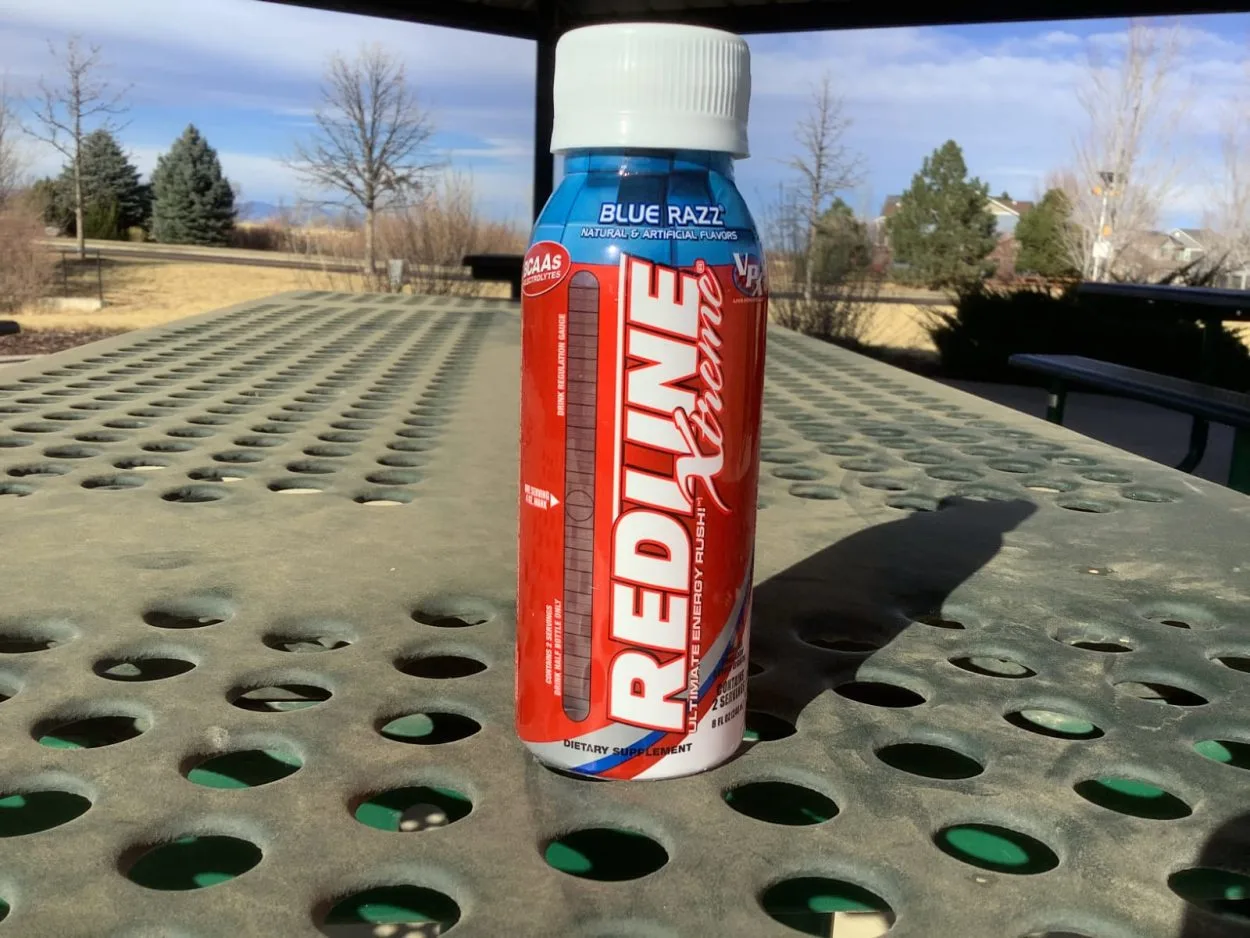
Redline Xtreme energy drinks can provide a significant energy boost. This VPX beverage comes in 8-ounce bottles and has a whopping 316mg caffeine content.
It’s high in caffeine (316mg), yet it’s low in carbohydrates, calories, and sugar. This makes it suitable for those on restricted diets.
It also contains vitamins and minerals to help you enjoy your workout.
While Redline Xtreme eliminates sugar, you can still gain weight if you don’t exercise self-control. Artificial sweeteners have been linked to an increase in appetite and a higher risk of high blood pressure and diabetes.
In my perspective, Redline Xtreme isn’t a really great energy drink, but it is extremely powerful.
It is tasty and provides a good quantity of energy, even though it is sugar-free.
Monster Energy Drink
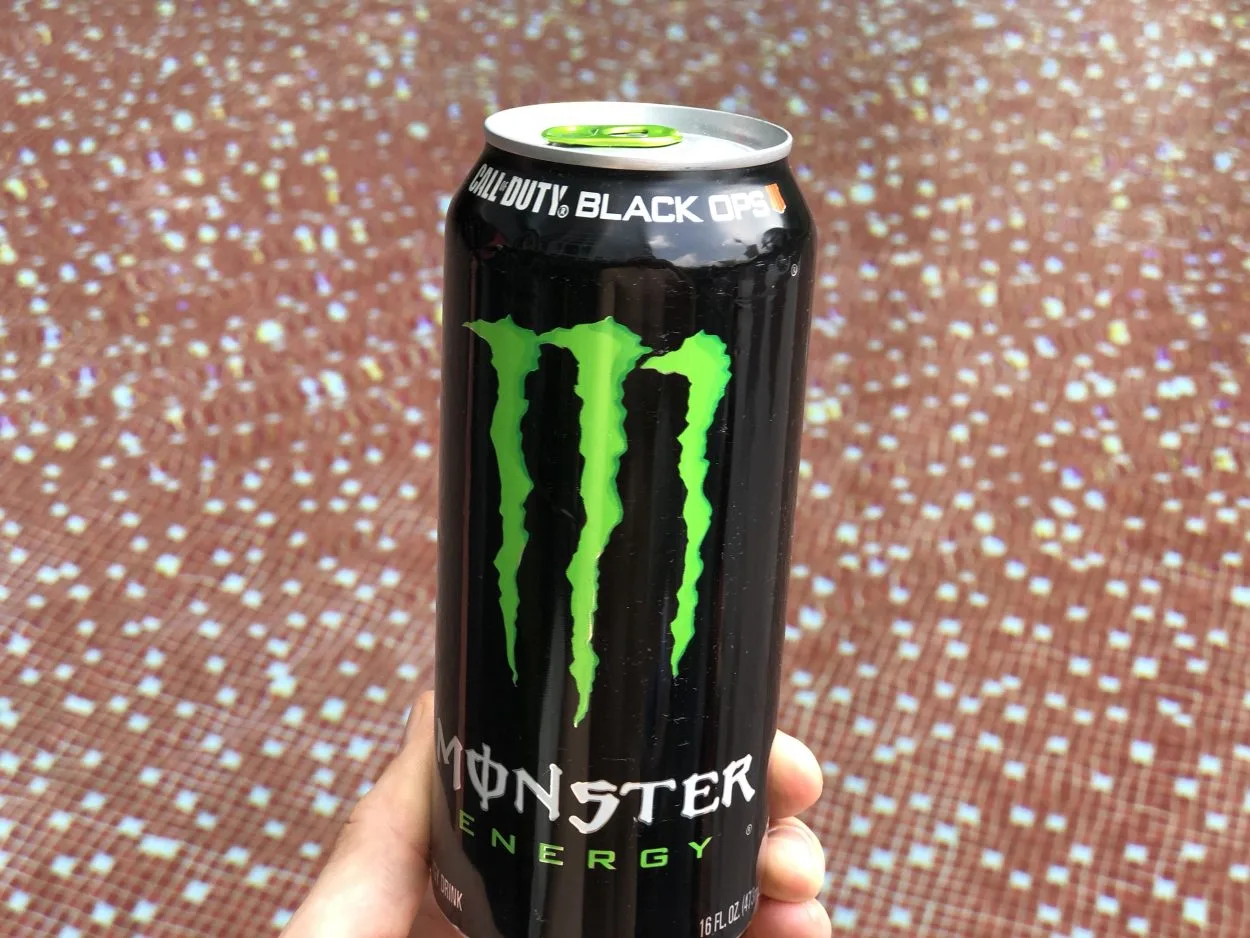
Monster Energy is the most well-known brand when it comes to energy beverages. It’s a reasonably recognized energy drink, with its distinctive green-claw design running down the side of a black can.
A regular 16 fl. oz can of Monster Energy has 160mg of caffeine, a standard amount for an energy drink of this size.
Monster Energy contains 55 grams of sugar per serving, making it one of the sugariest energy beverages on the market.
In comparison, 55g of sugar is roughly 3.5 teaspoons of sugar, which is an unhealthy amount of sugary deliciousness regardless of whether you have a sweet tooth.
It contains many B-Vitamins, providing up to 200 percent of the daily value.
Monster contains Panax ginseng, a natural herb that has been used in several traditional medicines and recipes, so it’s no surprise that it’s included in energy drinks as well.
Conclusion
The Red Bull Blue Edition Energy Drink contains 160 calories, 114 milligrams of caffeine, 38 grams of sugar, and 41 grams of carbs. If I had to rate it, I’d give it a seven out of ten.
Red Bull Blue Edition is a high-intensity energy drink that claims to meet the energy requirements of the majority of people. It has a nice, energetic flavor, and the active ingredients appeal to most energy consumers.
If you’re caffeine-sensitive, new to energy drinks, or have a medical condition, seek products like Alani Nu and Runa, which have less caffeine and are also sugar-free.
